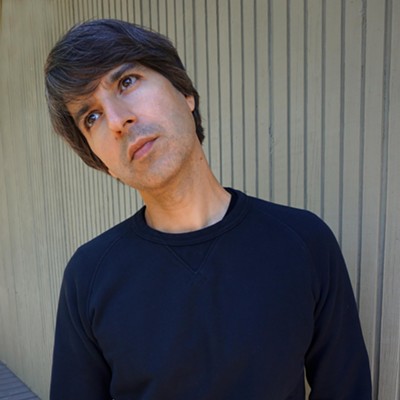Why do you go downtown? Are you a stranger among the masses, or an interconnected cog in the community? What does the word stranger even mean?
3 Degrees of Strangers hopes to reveal the answers through a series of interactive exhibits. Visitors are invited to pin their favorite places to a map of downtown Tucson, add a photograph of themselves to a connection board, and compare answers to various questions.
"The more people that show up to the exhibit, the more interesting the board will be," said local architect and University of Arizona professor Bill Mackey.
You won't find Mackey's name in the credits: Strangers Anonymous and Associates nurtured the exhibition from production to promotion. Members of the diverse group have a wide range of aspirations; they want to be engineers, public-health and business professionals, and artists. For all of them, it's their first experience planning and executing a public exhibition.
Strangers Anonymous and Associates is the pseudonym for Mackey's urban exhibition class in the UA Honors College.
Mackey became involved in city master planning while working for a downtown architecture firm in the late 1990s.
"I think downtown is an interesting place, because it's really just the community's place," Mackey said. "No one can stake claim to it."
His enthusiasm for urban space led to the class, which is a combination of lecture, discussion and production.
"Downtown Tucson is a kind of a place we use more or less as a lab," Mackey said.
For some students, it was their first prolonged exposure to downtown. Aerospace engineering junior Phillip Greenberg and public-health sophomore Myra Pixler admitted visiting downtown only occasionally.
"Downtown Tucson might be one of few places in town where you can be connected and a stranger," Mackey said.
Sometimes, students learned about downtown through impromptu guest speakers. During a class discussion in front of the Bank of America on Pennington Street, a homeless man named Steve came up and joined the conversation.
"It was kind of awkward at first, because what we were talking about was strangers," Pixler said.
Initially, some of the students thought Mackey had paid someone to interrupt their class, but it was soon apparent that the man just wanted to share his own story.
The experience and class discussion challenged the group's ideas about strangers. Many agreed that the word came with a negative connotation.
"For me, before, the term stranger, I kind of thought of someone creepy," Pixler said. "Now we kind of changed that around to mean someone you could meet, potentially."
The idea stuck: For several class hours, everyone brainstormed how to transform the concept into an interactive exhibit.
One of their biggest inspirations for the exhibition's name and concept was the theory of the three degrees of influence, Greenberg said. It states that one person's actions or opinion impact not only close friends, but also their friends and friends of friends.
After they determined the main idea, the class split into three groups: content, execution and marketing. The first group developed the main components of the exhibit; the execution group brought it to life; and the marketers got the word out.
When people enter the exhibit, they'll get nametags—but there's a twist.
"You don't put your name on it—(but) you can put anything else," said Greenberg, a member of the content team. The idea is to encourage interaction among the people who visit.
After having their photo taken, visitors will affix them to a board and have an opportunity to connect ribbons to other photos on the board to illustrate their connections.
"If we get a good amount of people there, it will turn into science and art together," Greenberg said.
There's also a series of filmed man-on-the-street-style interviews with downtown Tucsonans that visitors can watch.
People also will be able to indicate the areas downtown where they feel anonymous or connected by using various colored pins. The hope is to show the dual nature of space, because places where some seek anonymity might be where others seek connection, Greenberg said.
The students are excited about the exhibition and hope they can share what they've learned with the community.
"I want people to have a better appreciation for other people they don't know," Pixler said. "Maybe they'll be more willing to not just ignore someone standing in line behind them."







